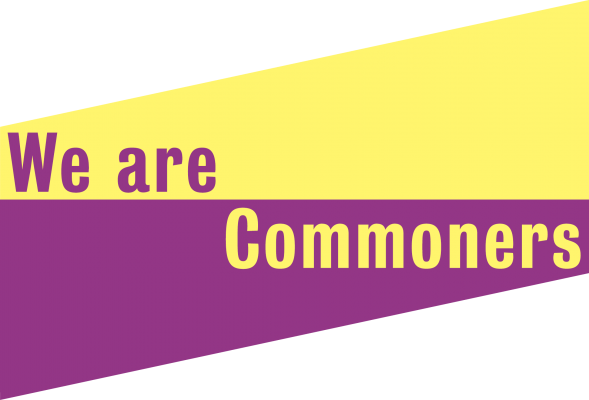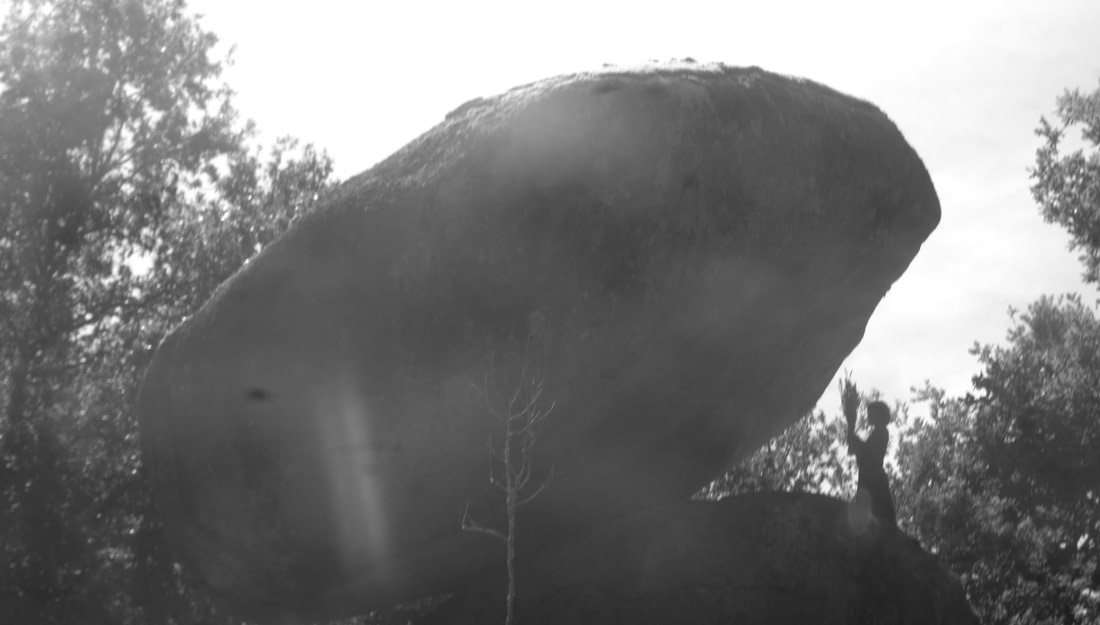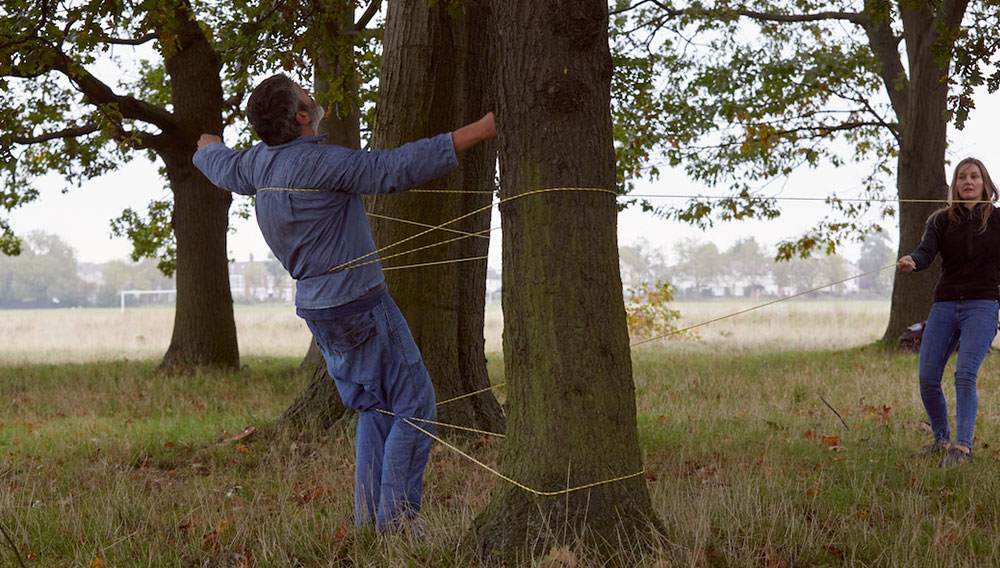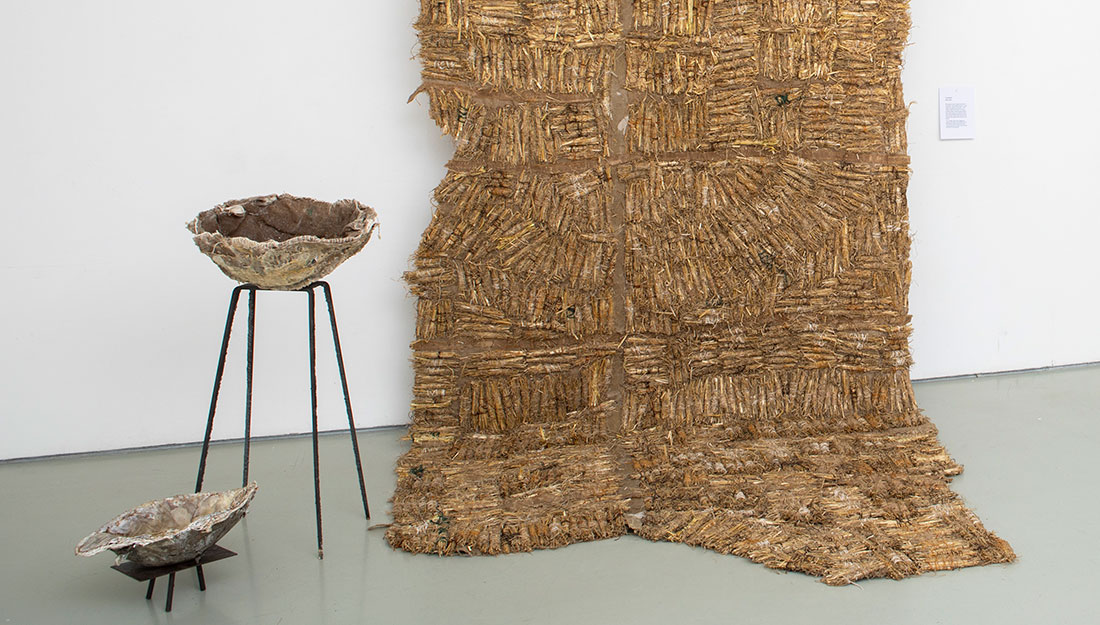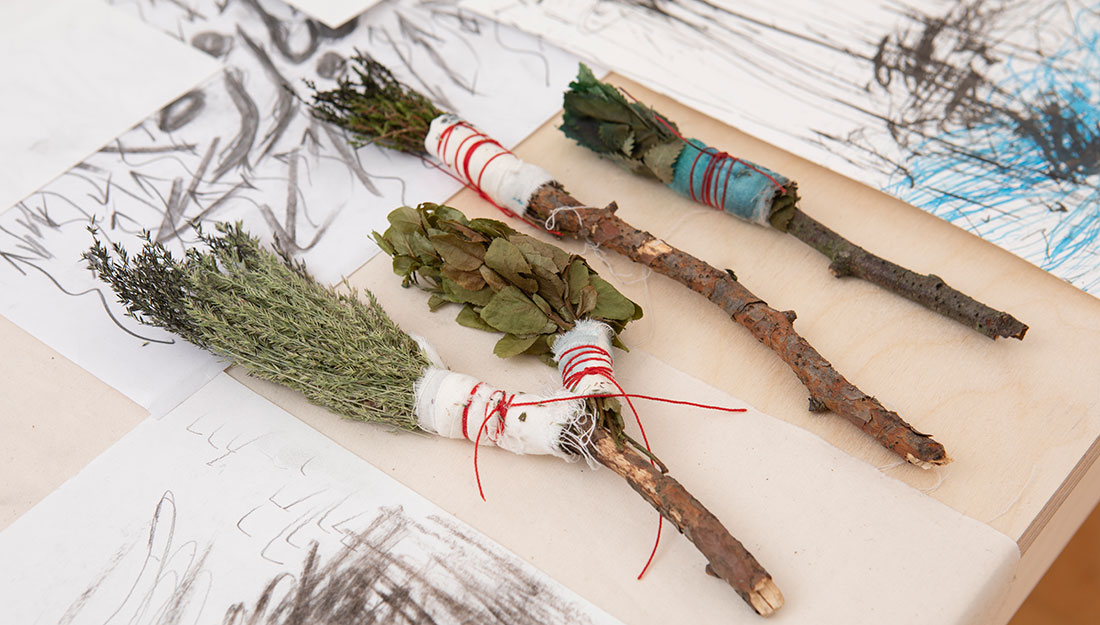The We are Commoners exhibition is divided into three themes: claiming, healing and co-operating. This page focuses on claiming.
This theme is about people taking action to claim back shared spaces and resources. By working together we can make decisions to shape and improve the future of our communities.
Featured Artists
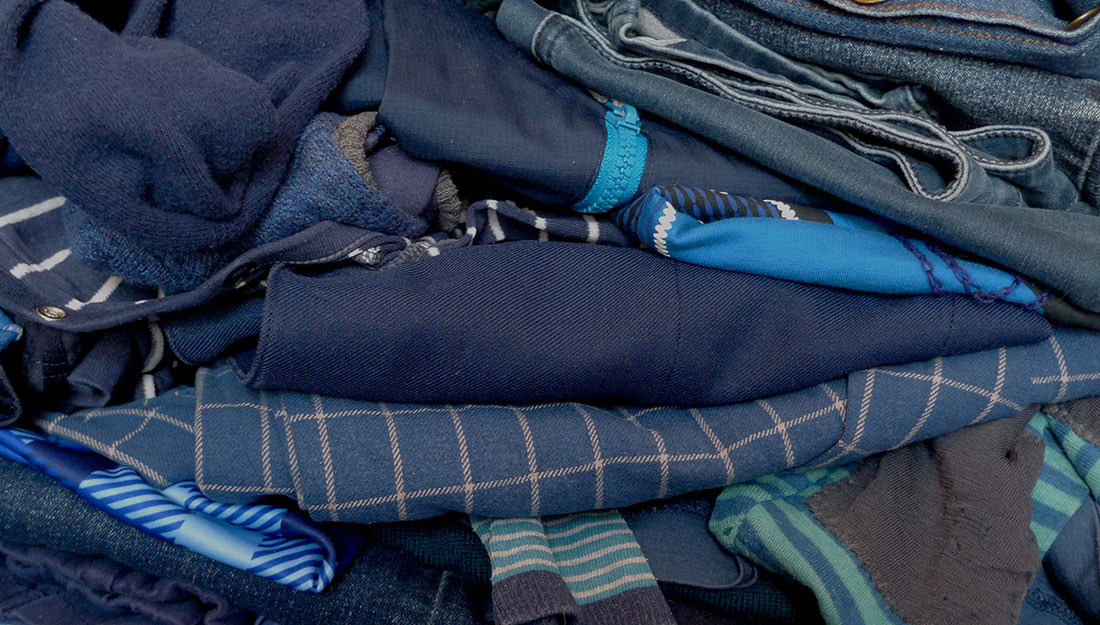
Amy Twigger Holroyd
Amy is an artist and researcher who is interested in fashion and sustainability. She sews, knits and crochets and uses these skills in some of her artworks.
For We are Commoners she has created the installation ‘A Temporary Outpost of the Blue Fashion Commons’. She has created an imaginary world where blue clothes cannot be bought or sold. Instead we are invited to donate or repair them. In return, we can choose a piece of blue clothing without having to pay for it. Amy is getting us to think differently about clothes; seeing them as a shared resource. By learning skills in mending and using creativity we can help prevent our wasteful throw away culture.
Find out more
Visit Amy’s website to find out a bit more about her.
Take Action
How could you tackle clothing waste?
Can you create a class clothing commons; teaching each other sewing skills and repairing and recycling school uniform?
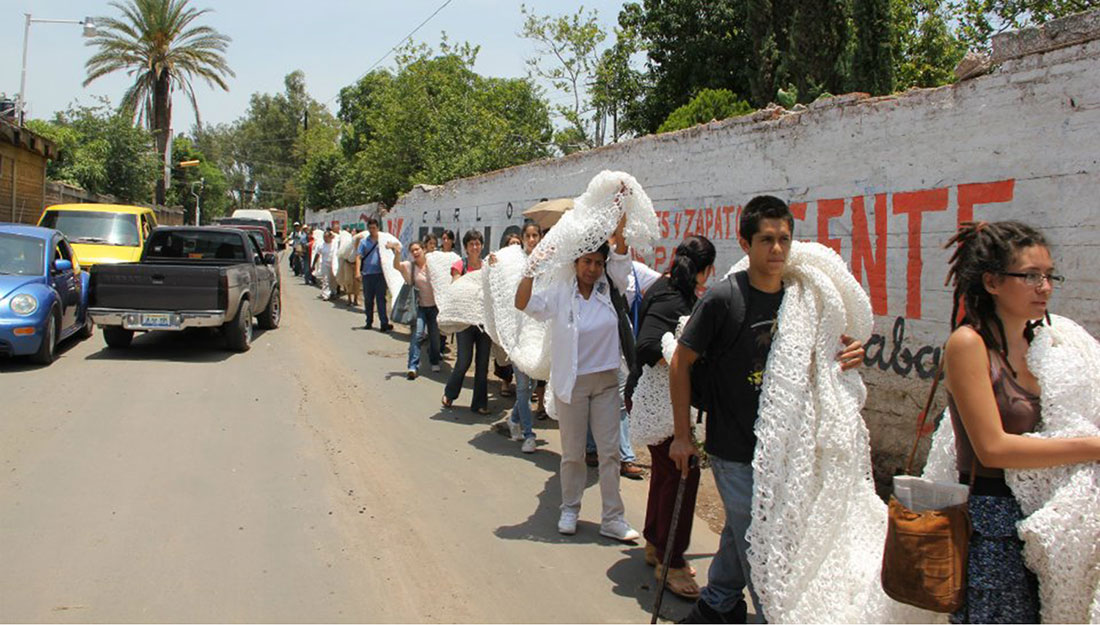
Claudia Rodríguez
Claudia is an artist from Mexico who works with materials, ideas and people. She creates sculptures and installations. She says: “I like to translate meaningful concepts into shapes or actions. The power of art to question and redefine interests me, especially if it has social or political content.”
For We are Commoners she is presenting the ‘Nets’ project. This project is about the polluted Santiago river in Guadeljara, Mexico. Working with two others she taught 400 people from communities along the river to finger knit and together they created a piece of finger knitting that was 150 m long. They carried it in a procession to a site along the river. The process of making bought people from different areas together to protest to the government about the pollution and to demand they clean it up.
Find out more
Visit Claudia’s website to find out more about her work.
Take Action
What natural resources need protecting in your community?
Is there a tree, a park, or as in Claudia’s case a water resource?
What act of collective making could you do as a school community to highlight its importance? Stitch, draw, knit, print, sculpt or crochet? What materials would you use?
How will you let other people know that you care about it?
Other things to do
Have a go at these ideas developed for the claiming theme by the exhibition artists: (online instructions coming soon)
Use natural materials to create your own biodegradable neckpiece. This activity could be adapted to suit all age ranges. Links to curriculum areas: science and art and design.
Learn how to use stitching to update clothes in your wardrobe giving them a new life. More suitable for a KS3 group. Links to curriculum areas: art and design, textiles, PSHE.
Make your own token to commemorate a campaign to save some common land. Suitable for a KS2 group. Links to curriculum areas: history, art and design, PSHE.
Key words
Exchange
Giving something to someone and receiving something in return.
Installation
3D visual display.
Sustainability
Avoidance of the depletion of natural resources in order to maintain an ecological balance.
Biodegradable
Any substance capable of being decomposed by bacteria or other living organisms and thereby avoiding pollution.
Pollution
The presence in or introduction into the environment of a substance which has harmful or poisonous effects.
